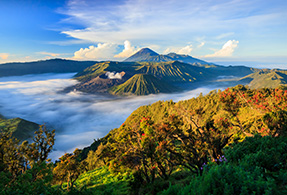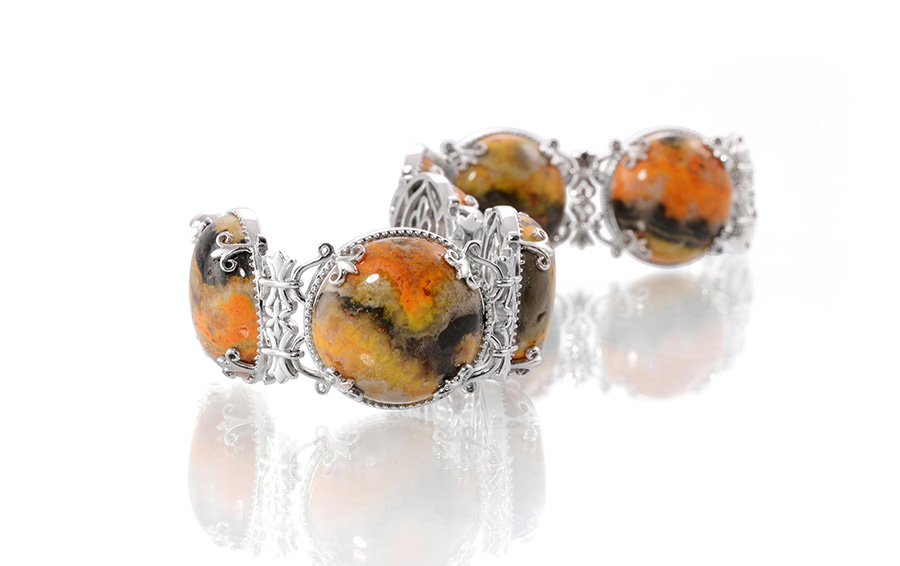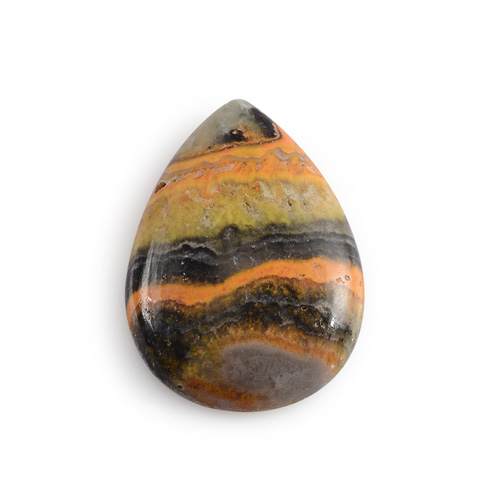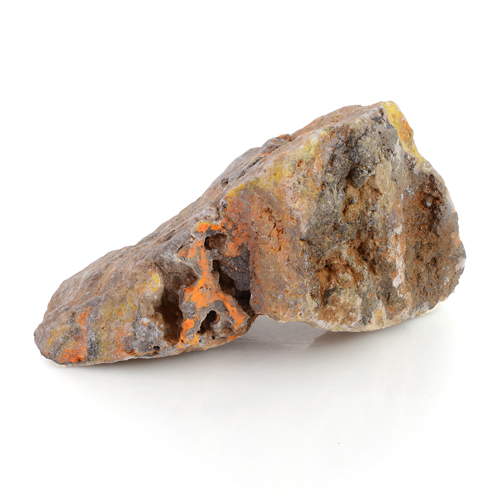Jasper: Bumble Bee
A rare creamy and dark stone developed from volcanic movements in the mountains of Bali, Bumble Bee jasper offers an eye-catching swirl of color that appeals to gemstones buffs from all over the globe.
Jasper is the Greek term for “spotted stone” and Bumble Bee jasper is its sole yellow and black variety. Jasper may vary in shades, but each exhibits a distinct array of lines, stains, and hues across the gemstone. Though commonly counted as a chalcedony, scientists categorize jasper as a gemstone because of the stone's sandy form. Chalcedony suggests any form of quartz with crystals that are too tiny to be seen by the naked eye.
- Archaeologists have unearthed relics sculpted from chalcedony in Babylon and Assyria dating back to 500 BCE.
- Bumble Bee jasper is considered a protective stone and soothing balm for pains and allergies.
- It is considered a symbol of victory over uncertainty, embracing possibility and being true to oneself.
- As the “supreme nurturer,” jasper helps one endure challenging times and maintain calm and poise.
LOCATION: Indonesia
We obtain our Bumble Bee jasper from the Papandayan mine. It sits atop Mount Papandayan, which is about 15 kilometers from the town of Garut in West Java, Indonesia. It stands 8,743 feet high and is one of the highest volcanoes in Indonesia. It is susceptible to seasonal eruptions and dangerous gas emissions which makes mining difficult. This stone originates in hot sulfurous gas pockets near the mouth of the volcano alongside agate. Similar to other jaspers, the market reacts to the Bumble Bee variety according to the fullness of color. It is extremely difficult to obtain jaspers bearing a consistent look.

- Ranks 6.5 to 7.0 on the Mohs hardness scale.
- Color displays bands of yellow and black blended with a variety of hues including white, orange, red, brown or green.
- Sourced from the Papandayan mine in Java, Indonesia.
- Member of the chalcedony quartz family.
- Also known as agate jasper.





